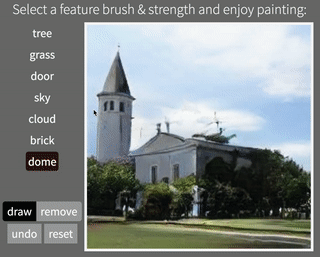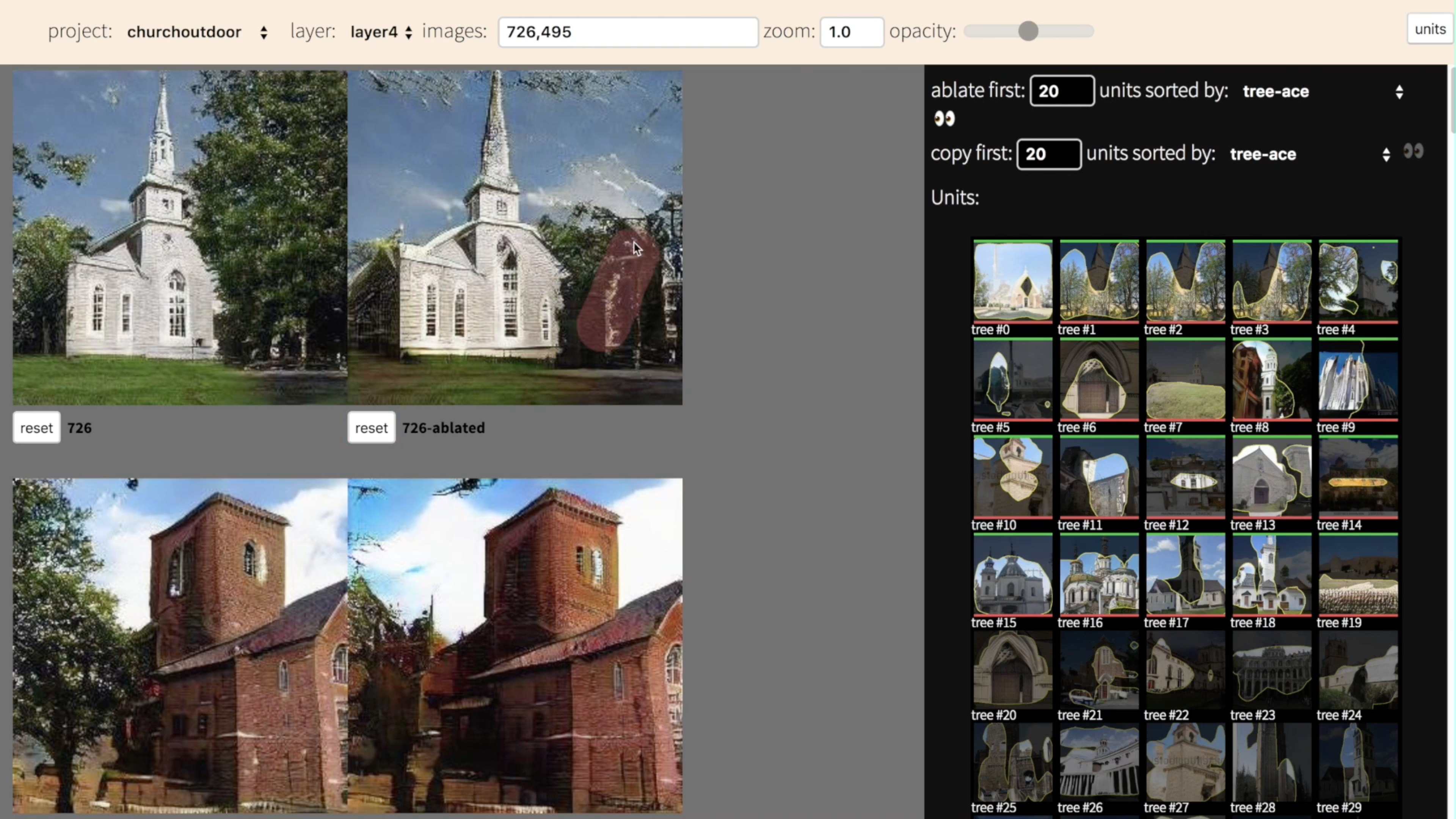- 10% (Generate images with GANPaint)
- 20% (Dissect any GAN model and analyze what you find)
- 20% (Compare with other method)
- 30% (Assistant)
- 20% (Mutual evaluation)
reference:
Project | Demo | Paper | Video
GAN Dissection is a way to inspect the internal representations of a generative adversarial network (GAN) to understand how internal units align with human-interpretable concepts. It is part of NetDissect.
This repo allows you to dissect a GAN model. It provides the dissection results as a static summary or as an interactive visualization. Try our interactive GANPaint demo to interact with GANs and draw images.
Visualizing and Understanding Generative Adversarial Networks
David Bau, Jun-Yan Zhu, Hendrik Strobelt, Bolei Zhou, Joshua B. Tenenbaum, William T. Freeman, Antonio Torralba
MIT CSAIL, MIT-IBM Watson AI Lab, CUHK, IBM Research
In arXiv, 2018.
Let's set up the environment and dissect a churchoutdoor GAN. This requires some CUDA-enabled GPU and some disk space.
To install everything needed from this repo, have conda available,
and run:
script/setup_env.sh # Create a conda environment with dependencies
script/make_dirs.sh # Create the dataset and dissect directories
script/download_data.sh # Download support data and demo GANs
source activate netd # Enter the conda environment
pip install -v -e . # Link the local netdissect package into the env
Details. The code depends on python 3, Pytorch 4.1, and several other
packages. For conda users, script/environment.yml provides the details
of the dependencies. For pip users, setup.py lists everything needed.
Data. The download_data.sh script downloads the segmentation dataset
used to dissect classifiers, the segmentation network used to dissect GANs,
and several example GAN models to dissect. The downloads will go into
the directories dataset/ and models/. If you do not wish to download
the example networks, python -m netdissect --download will download
just the data and models needed for netdissect itself.
GAN example: to dissect three layers of the LSUN living room progressive GAN trained by Karras:
python -m netdissect \
--gan \
--model "netdissect.proggan.from_pth_file('models/karras/livingroom_lsun.pth')" \
--outdir "dissect/livingroom" \
--layer layer1 layer4 layer7 \
--size 1000
The result is a static HTML page at dissect/livingroom/dissect.html, and
a JSON file of metrics at dissect/livingroom/dissect.json.
You can test your own model: the --model argument is a fully-qualified
python function or constructor for loading the GAN to test. The
--layer names are fully-qualified (state_dict-style) names for layers.
By default, a scene-based segmentation is used but a different segmenter class
can be substituted by supplying an alternate class constructor to
--segmenter. See netdissect/segmenter.py for the segmenter base class.
Once a GAN is dissected, you can run a web server that provides an API that generates images with (optional) interventions.
python -m netdissect.server --address 0.0.0.0
The editing UI (right) is served at http://localhost:5001/ .
Other URLs:
- http://localhost:5001/api/ui is the OpenAPI/swagger UI for directly testing GAN interventions.
- http://localhost:5001/data/livingroom/dissect.html static net dissection reports.
- http://localhost:5001/data/livingroom/edit.html a dissection-based interface for testing interventions.
- TODO: http://localhost:5001/ganpaint.html will serve GANpaint
Code is from gandissect. All credit goes to the authors of gandissect, David Bau, Jun-Yan Zhu, Hendrik Strobelt, Bolei Zhou, Joshua B. Tenenbaum, William T. Freeman and Antonio Torralba.


